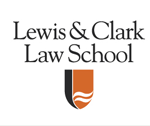Intimidation and the Internet
Document Type
Article
Publication Title
Penn State Law Review
Version
This is a pre-publication version of an article that appeared on page 579 of Penn State Law Review, Vol. 110, Issue 3, in Winter 2006.
Journal Abbreviation
Penn St. L. Rev.
Abstract
In 2002, in the case of Planned Parenthood of the Columbia/Willamette, Inc. v. American Coalition of Life Activists, the Ninth Circuit Court of Appeals, sitting en banc, upheld the district court's decision that the American Coalition of Life Activists, and several individuals associated with it, had violated the Freedom of Access to Clinics Entrances Act (FACE) by maintaining a website entitled the Nuremberg Files. The Nuremberg Files was a website that contained a list of names including those of doctors who performed abortions. Some names on these lists were crossed out, while others were in light grey rather than black. A legend on the website explained that the persons whose names were listed in black were working, while those listed in grey were wounded, and those whose names were struck out were fatalities. A major issue in the case was whether it was a violation of the First Amendment to restrain the defendants from maintaining this website. Of the eleven judges on the panel, six found that the website was not protected speech under the First Amendment, while five found that it was. Commentary on the decision in both the press and the academy was generally negative, viewing the decision as a setback for First Amendment values.
This article argues that while the Nuremberg Files site was not protected by the First Amendment, the reasons given by the judges in the majority on the Ninth Circuit were not the correct reasons for that conclusion. Rather, this article suggests that current First Amendment doctrine does not directly address the problem raised by the Nuremberg Files site: speech that is neither a direct threat nor an incitement, but nevertheless -- because of its particular character, including its publication on the Internet -- is intended to and does have the immediate effect of intimidating persons from engaging in lawful, even constitutionally protected, behavior.
In reaching this conclusion, this article will try to make three points. First, fear is a social evil that the state may protect against, an evil distinct from the actual danger of an event occurring. Second, the Internet is special; it is not like any other traditional media. Third, First Amendment analysis should not be limited to categorizing particular activities in certain predetermined boxes, such as true threats, incitement, defamation, fighting words, etc.; rather, it should be governed more by principles that take account of the balancing implicit in current First Amendment doctrine and categories.
First Page
1
Last Page
15
Publication Date
2006
Recommended Citation
William Funk,
Intimidation and the Internet,
110
Penn St. L. Rev.
1
(2006).
Available at:
https://lawcommons.lclark.edu/faculty_articles/229


Comments
Page numbering in the linked pre-publication version differs from the final published version.